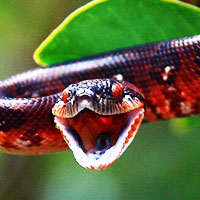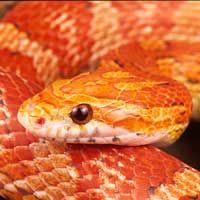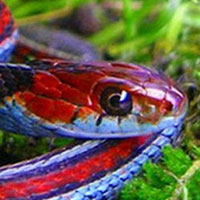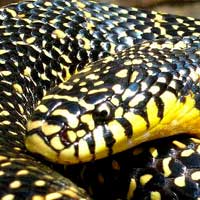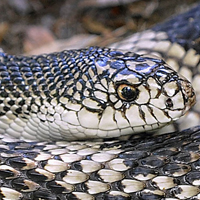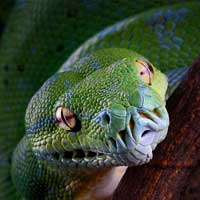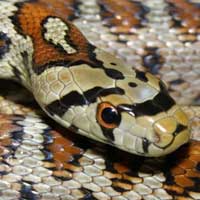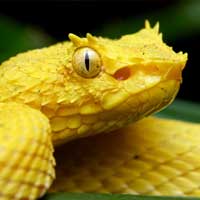Unveiling the Mysteries of the Black Mamba
The Black Mamba (Dendroaspis polylepis) belongs to the Elapidae snake family, which is known for its highly venomous species, slender bodies, and fixed front fangs, making it one of the most dangerous snakes in the world.
Scientific Name: Dendroaspis polylepis
Snake Family: Elapidae
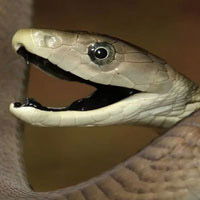
An Overview of the Black Mamba
The Black Mamba (Dendroaspis polylepis) is one of the most feared and respected snakes in the world. Renowned for its incredible speed and potent venom, it is native to sub-Saharan Africa and plays a vital role in its ecosystem. Known as the longest venomous snake in Africa, it is both a predator and a creature to be approached with caution, captivating the interest of herpetologists and snake enthusiasts alike.
The Black Mamba's Diverse Habitat
The Black Mamba thrives in a variety of environments across sub-Saharan Africa, showcasing its adaptability. From savannas and open woodlands to rocky outcrops and lowland forests, this snake is versatile in its habitat preferences. Below are key insights into where the Black Mamba lives:
- Geographic Range: Found across countries such as South Africa, Kenya, Ethiopia, and Senegal.
- Preferred Terrain: Savannas, rocky hills, and light forests with plenty of cover for hiding.
- Climate: Warm to hot climates, with temperatures ranging from 20°C to 40°C.
In addition to these environments, the Black Mamba often occupies abandoned termite mounds or hollow tree trunks as its lair, providing safety and concealment.
| Habitat Feature | Description |
|---|---|
| Altitude Range | Sea level to 1,800 meters |
| Preferred Terrain | Savannas, rocky outcrops, forests |
| Temperature Tolerance | 20°C to 40°C |
What Does the Black Mamba Eat?
The Black Mamba is a carnivorous predator that relies on its lethal venom to subdue prey. Its diet is diverse, consisting mainly of small mammals and birds. Below are the main features of its feeding habits:
- Primary Diet: Rodents such as rats and hyraxes.
- Occasional Prey: Birds and other small reptiles.
- Hunting Strategy: The Black Mamba is an ambush predator, striking quickly and delivering venom that immobilizes its prey.
This snake typically consumes its prey whole and can survive for weeks between meals due to its efficient metabolism. Juvenile Black Mambas often hunt smaller prey, such as lizards, before graduating to larger mammals.
The Black Mamba's Behavior and Temperament
Despite its reputation, the Black Mamba is not inherently aggressive and prefers to avoid conflict. However, when threatened, it exhibits several defensive behaviors. Key characteristics include:
- Temperament: Generally shy but highly defensive when cornered.
- Speed: One of the fastest snakes, capable of reaching speeds of up to 20 km/h.
- Defensive Display: Raises the front third of its body, flattens its neck into a hood-like shape, and hisses loudly.
The Black Mamba's behavior varies with environmental factors, and it is most active during the day, using its keen senses to detect threats and prey.
Health and Lifespan of the Black Mamba
The Black Mamba's lifespan varies significantly between wild and captive environments. In the wild, they typically live up to 11 years, but this can extend to over 20 years in captivity with proper care. Key health considerations include:
- Lifespan: 11 years in the wild; up to 20 years in captivity.
- Predators: Birds of prey, mongoose, and larger reptiles pose threats, especially to juveniles.
- Common Ailments: Dehydration and parasitic infections during dry seasons.
Regular veterinary care in captivity can mitigate many health issues, but Black Mambas are incredibly resilient creatures in their natural environment.
The Black Mamba's Reproductive Habits
The reproductive cycle of the Black Mamba is as fascinating as its other characteristics. Mating usually occurs during the spring, with males engaging in combat rituals to secure mates. Key reproductive traits include:
- Mating Season: Spring to early summer.
- Egg Clutch Size: 6-25 eggs, depending on the female's size and age.
- Incubation Period: Eggs hatch after 80-90 days in warm, humid conditions.
- Juvenile Behavior: Hatchlings are fully independent and venomous from birth.
The Black Mamba's reproductive success is vital for maintaining its population, especially given its role as a top predator in its ecosystem.
Safety and Handling Guidelines for the Black Mamba
Handling the Black Mamba is a task reserved for trained professionals due to its speed, agility, and venomous nature. Safety tips include:
- Always use appropriate tools, such as snake hooks and tongs.
- Wear protective gear, including snake-proof gloves and boots.
- Ensure the enclosure is escape-proof and secure.
- Have access to antivenom and emergency medical support.
Education and preparation are critical for anyone working with this snake to minimize risks and ensure safe interactions.
Disclaimer
The content in this article is intended for informational purposes only. SnakeEstate strongly advises against handling or interacting with venomous snakes, such as the Black Mamba, unless you are a trained professional. These snakes are highly dangerous, and improper handling can result in serious injury or death. Always adhere to local regulations and prioritize safety when dealing with wildlife.
